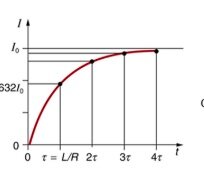Nope! motors are inductive! , even when stationary , and they initially resist any change in the magnetic field by inducing an equal and opposite voltage , so the current builds slowly.( see graph) You are right in thinking the inductance of a stationary motor is lower than one which is rotating but it still reacts as an inductor and the instant a voltage is applied it will produce a back emf , rotating or not. The initial inrush timescale is a lot longer than the initial time rise of the current and this varies with load , By picking a fast cycle time for the PWM this longer high inrush is avoided , also it reduces the stress on the switching transistors -reducing the dV/dt value which is a killer for transistors. I've not looked at the Powrtouch units design to see if they use a free-wheeling diode network to absorb the emf spike when power is removed from the motor. As I said, I spent 20+ years working on motor inverters for both large and small AC/DC motors also scanning electromagnets in high resolution mass spectrometers and switch mode power supplies ( stationary inductors) and looking at the voltage /current waveforms was part of the design process to check the transistors were upto it ( and sometimes why not!). The slow build up of torque is as you say also there to ease the initial movement of the caravan which give the nervous user a greater sense of control.period the full supply voltage will be applied to the motors brushes, and consequently the stationary motor will draw the full current for the duration of the pulse width.


